The latest criticism around the restoration of Chhatrapati Shivaji Maharaj Terminus involves clumsy stained-glass window renditions. Civil engineer Chetan Raikar replaces railway engineers, but is that good enough, ask heritage experts
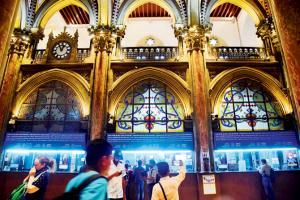
The most visible and latest restoration efforts that fall below heritage conservation standards are to do with CSMT's stained-glass window arches and rotundas along the platform and ticket offices. Pics/Suresh Karkera
Judith Holliday, in her PhD thesis titled, Nineteenth Century Stained Glass in Bombay, Its Role in the Architectural and Ideological Landscape, 2001, writes this about the art within Victoria Terminus (today's Chhatrapati Shivaji Maharaj Terminus): "The craftsmanship of the stained glass is of a high standard", before arguing for its value by saying that the intricacy of detailing would have made it "far more costly per square foot than that in the University of Bombay's Library and Rajabai Tower."
ADVERTISEMENT
Also Read: Central Railways plans to spend Rs 25 crore on restoring CSMT to its original glory
Stained glass is a complicated form of Christian art dating back to the 14th century. It forms one of many highpoints of legendary British architect FW Stevens' Victorian-Gothic creation which is considered an outstanding example of late 19th century railway architecture in the British Commonwealth. This stained-glass art has been the talking point on social media recently after an image of amateur artpassed off as the real deal, emerged online. It was the design of an owl perched on a branch, found on a round window along the Platform No. 1 wall.
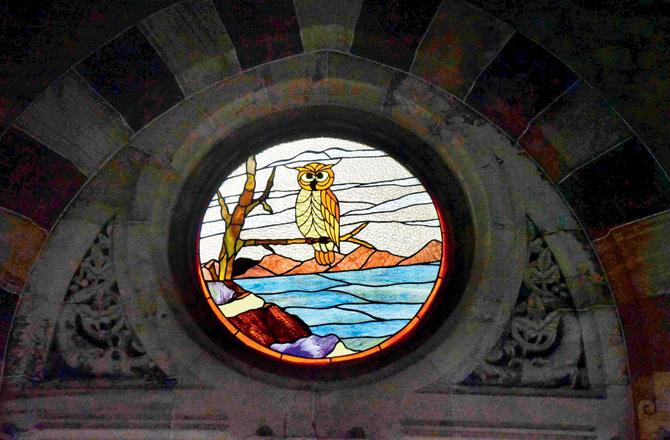
A juvenile artwork of an owl seen in a latest stained-glass window
Several such new stained-glass windows have been revealed as the multi-crore restoration project is underway inside what is one of the world's busiest railway stations. The Grade 1 heritage structure, which won the prestigious World Heritage Site (WHS) tag from UNESCO in 2004, has seen ongoing restoration since 2003 in several phases.
Mumbai: JJ School to install centralised air conditioning to restore CSMT
Expert questions quality
Mumbai-based Swati Chandgadkar, celebrated stained-glass conservator who has worked on JN Petit Library, University of Mumbai and Keneseth Eliyahoo synagogue, said she would not refer to the additions at the station as "restoration". "These are new stained-glass panels inserted into the original openings. There is a total disregard for the principals of restoration or reconstruction of the original in a historical connect." Chandgadkar said there appeared to have been no archival research undertaken to learn what the original artwork looked like since the present panels show no thematic coherence with the grand Gothic setting of the building. "There is enough evidence right within CSMT of original stained glass commissioned when the structure was built in 1888. The tall lancet lights in the tower are an excellent example of the Victorian paintwork, theme [small steam engines] and relevance [Gothic geometric foliated designs] in stained-glass discipline," she added.
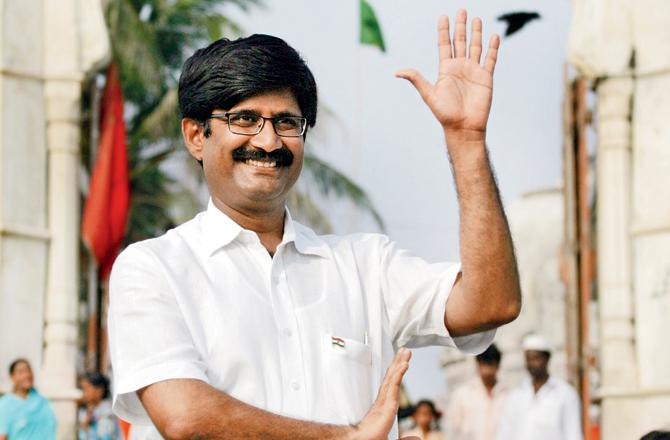
Chetan Raikar
Chandgadkar calls the new panels "an assembly of coloured glass, typical of designs from a stained-glass beginner's catalogue". This is not the first time that the restoration undertaken by Central Railway (CR) has been questioned. In February, this paper highlighted how Greco-Roman style figures on the main façade of the building had been restored with little respect for the original style, leaving them looking like caricatures. It's possible that following public criticism, around three months ago, CR brought on board Chetan Raikar, a civil engineer, to oversee the current phase here on, and "right the wrongs".
"Whatever wrongs have been done will be righted; we are willing to make changes. We need to study each of the mistakes [made]," said Raikar over a telephone call. He called it "a collective mistake" and regretted not having raised his voice as a member of the city's architect community. "The owners of the structure have acted in good faith to the content of the Fabric Status Report submitted to MHCC [Mumbai Heritage Conservation Committee], to undo the wrongs,” he added. Raikar is referring to the Fabric Status Report previously submitted by INTACH that identifies the defects in restoration and offers recommendations on the site.
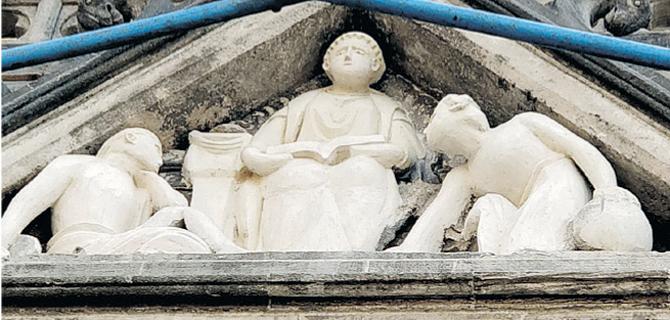
Sculptures in Greco-Roman realism style on the building's façade were restored in amateur fashion, and invited severe criticism on social media
"We need photo records of the original elements. Since I was involved in the waterproofing of the structure during the early restoration phase from 2001-7, I know the site like the back of my hand. However, I am not authorised to make a change unless I have evidence to support it. The existing CR archive needs more material. The vastness of the building is my biggest challenge from a restoration point of view. I appeal to everyone, from the common man to the expert to share any documentation on CSMT. Without details, I will be extrapolating."
Mumbai: CSMT will soon return to its 1888 avatar!
The MHCC, which recently included noted heritage conservationist Vikas Dilawari on its panel, approves all work related to heritage structures in the city. When news of the Greco-Roman figures broke, MHCC wrote a letter cautioning the Railways about low-quality interventions affecting the future of CSMT's World Heritage Site tag. This seems to have been the tipping point for CR to slip into correction mode.
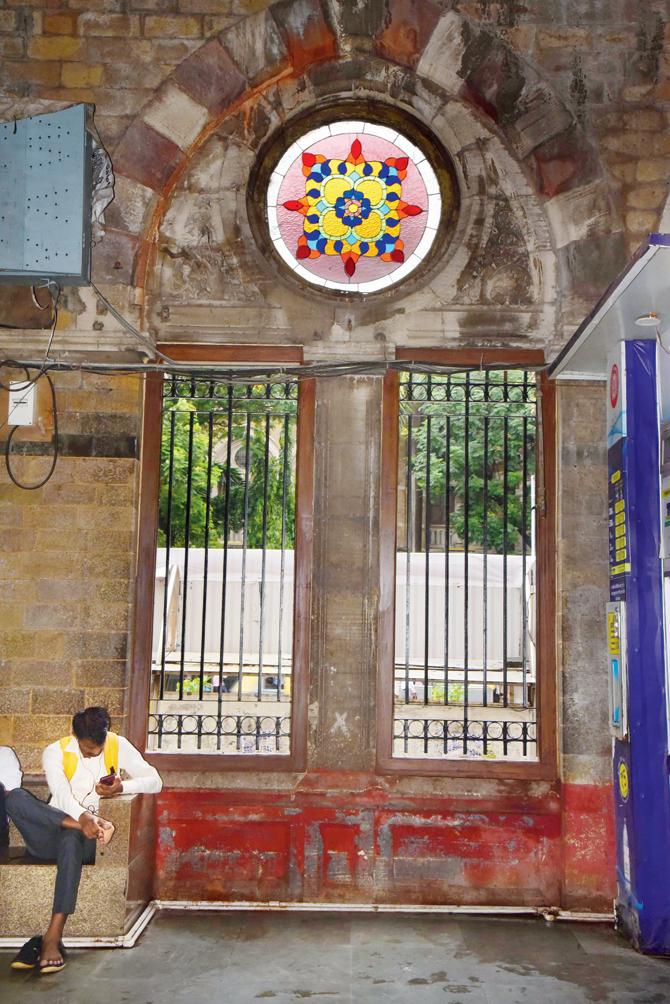
Swati Chandgadkar, an expert in stained-glass restoration says the rotundas along the CSMT's concourse (platform area) are not authentic stained glass. Pic/Suresh Karkera
What mistake?
While Raikar claimed he was CR's Dr Fix It, Sunil Udasi, Central Railways PRO, asked this writer what "mistake" we were referring to. "I won't call these mistakes. Whatever errors you are referring to are actually work in progress. Wherever corrections [with stained glass] are required, we will do them. We have experts on board now, including Dr Rajiv Mishra, principal of Sir JJ School of Architecture."
Mishra told mid-day, when he was approached for a consult, he had stated, "don't damage anything if you do not have the expertise". "We are advising them on the air conditioning of the heritage building and opening up of the false ceiling to give a feeling of grandness. This will take about three months," he added. While Udasi was unable to furnish details of the expert or firm commissioned by CR to undertake the current phase of restoration before Raikar stepped in, those in the know believe it was managed by in-house railways engineers.
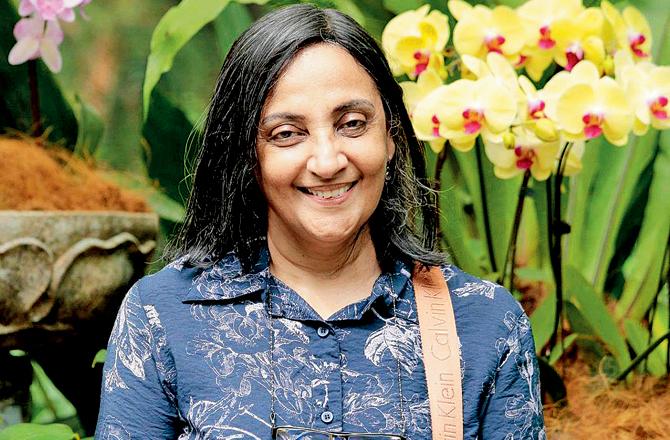
Swati Chandgadkar
Rajan Jayakar, convenor of INTACH (Mumbai Chapter), agreed. "It appears that the Central Railway tried to use in-house resources, hence the errors. Cleaning the surface of walls is one thing and restoring is another. If we are not careful with the yellow soft Porbunder stone, the gargoyles, that are exposed to nature, will be damaged. INTACH was responsible for championing CSMT's candidature for the WHS tag. It must be protected at all cost." Udasi is upbeat despite the flack. "Look at the outpouring of support on social media. We are on track. Once completed, people can judge for themselves. The building was beautiful; we will make it more beautiful."
Fit for the job?
ICOMOS (International Council on Monuments and Sites), an advisory arm of the World Heritage Committee, had recommended that the CSMT restoration programme be handled by qualified professionals or firms. Members of the group visited CSMT in 2003 and filed a report that stated that CR had already started the first phase of restoration of the Terminus, "but that the contractor has no previous experience in similar building conservation work" "ICOMOS considers it necessary to assure that the work is carried out by qualified firms, which was the recommendation in 1999," the report, available on the UNESCO site, said.
Jayakar summed it up when he said, "If you don't begin in the right way, what sort of correction is possible? However, the idea of amending things is good. My question is, are they [the new team] competent enough? Remember, once you restore, you have to ensure that you conserve."
500
No. of signatories to a change.org petition against 'fumbled' restoration, following mid-day's story
How does a site earn WHS tag?
At least 10 conditions need to be fulfilled for UNESCO to bestow a monument with the World Heritage Site (WHS) stag. Among them are:
-
It must represent a masterpiece of human creative genius.
-
It must exhibit an important interchange of human values, over a span of time or within a cultural area of the world, on developments in architecture or technology, monumental arts, town-planning or landscape design.
- It must be an outstanding example of a type of building, architectural or technological ensemble or landscape that illustrates (a) significant stage(s) in human history.
CSMT met all 10 requirements and was awarded the WHS status in 2004.
Information courtesy: Swati Chandgadkar
It is a blessing: Nandini Sampath, architect and design expert
I have always believed that public-private partnerships are important for heritage structures. I am glad to hear that after the mistakes, Central Railway has hired someone with knowledge. It is a building used by nearly three million people every day and we must protect it. Having said that, we need diverse experts on board, from historians to conservationists and technicians.
Catch up on all the latest Crime, National, International and Hatke news here. Also download the new mid-day Android and iOS apps to get latest updates
 Subscribe today by clicking the link and stay updated with the latest news!" Click here!
Subscribe today by clicking the link and stay updated with the latest news!" Click here!






